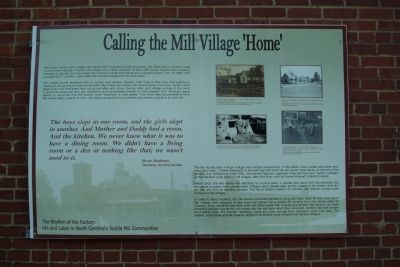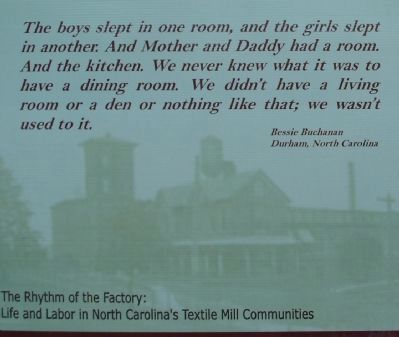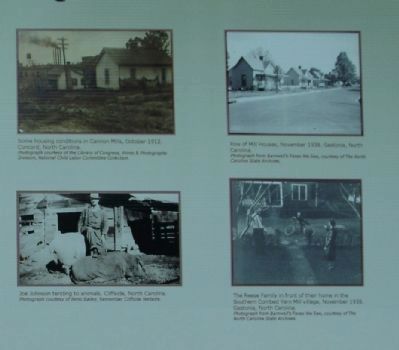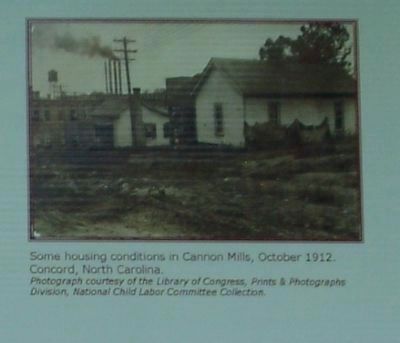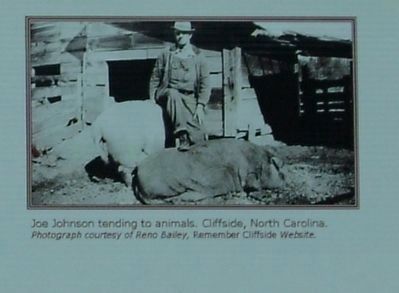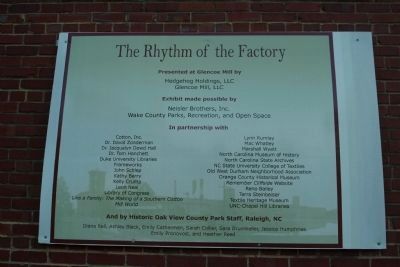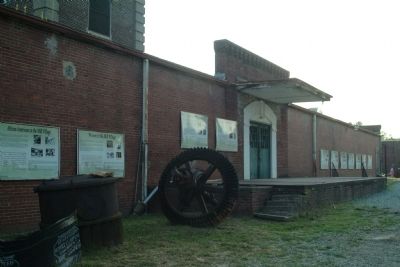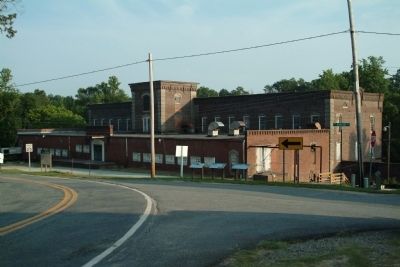Glencoe Village near Burlington in Alamance County, North Carolina — The American South (South Atlantic)
Calling the Mill Village 'Home'
Mill villages proved beneficial both to workers and owners. Workers lived close to their jobs and neighbors, creating a strong sense of community within the village. By locating the housing close to the mill, owners could keep watch over employees both during and after work hours. Owners often built villages outside of city limits to avoid city taxes and laws and maintain a rural atmosphere familiar to most workers. D.A. Tompkins urged owners to remember that mill workers were “essentially a rural people. They have been accustomed to farm life, where there is plenty of room… the ideal arrangement is to preserve the general condition of rural life.”
The boys slept in one room, and the girls slept in another. And mother and Daddy had a room. And the kitchen. We never knew what it was to have a dining room. We didn’t have a living room or a den or nothing like that; we wasn’t used to it.
Bessie Buchanan Durham, North Carolina
The mill houses built in these villages were simple constructions. In the 1800s, most houses were either two-story, four-room, I-frame clapboards or one-and-one-half story half-and-parlor style homes. At the turn of the century, D.A. Tompkin’s Cotton Mills, Commercial Features suggested three and four room “factory cottages” as the standard when building mill villages. After this time, most mill towns followed Tompkin’s design.
Before 1910, few mill homes had electricity or running water. A decade later about half had electricity, but only about a quarter had running water. Villagers often shared water pumps located on the streets, and very few had any form of sanitation system. This led to health problems for families, and diseases spread easily throughout the villages.
In order to recruit workers, the mill owners permitted families to bring with them much of their rural way of life. Villages were designed so that most mill homes had a garden for growing food and nearby areas for livestock. Many residents kept their small dirt yards swept free of grass just as they had done on the farm. Since the company owned the mill homes and the land upon which they were built, families had little concern for property lines. Mill children, therefore, came and went through neighbors’ yards with ease. This relaxed comfortable attitude towards neighbors fostered a sense of community among villagers.
Topics. This historical marker is listed in these topic lists: Industry & Commerce • Settlements & Settlers. A significant historical year for this entry is 1900.
Location. 36° 8.341′ N, 79° 25.682′ W. Marker is near Burlington, North Carolina, in Alamance County. It is in Glencoe Village. Marker is on Glencoe Street, on the left when traveling west. Glencoe Village is 3 miles north of Burlington, NC from NC Highway 62. Touch for map. Marker is at or near this postal address: 2406 Glencoe St, Burlington NC 27217, United States of America. Touch for directions.
Other nearby markers. At least 8 other markers are within walking distance of this marker. Neighbors Divided (here, next to this marker); The Rise of the Textile Mill Communities (here, next to this marker); Cotton Dust and Poverty (here, next to this marker); Power, Wheel House and Turbine (here, next to this marker); Women in the Mill Village (here, next to this marker); Picker House and Dye House (here, next to this marker); Children in the Mill Village (here, next to this marker); Working the Shift (here, next to this marker). Touch for a list and map of all markers in Burlington.
Related markers. Click here for a list of markers that are related to this marker. To better understand the relationship, study each marker in the order shown.
Additional keywords. Alamance Cotton Mill, Glencoe, Fabric, Textiles, Company Shops, Holt
Credits. This page was last revised on May 11, 2023. It was originally submitted on July 9, 2010, by Patrick G. Jordan of Graham, North Carolina. This page has been viewed 1,509 times since then and 74 times this year. Last updated on May 9, 2023, by Michael Buckner of Durham, North Carolina. Photos: 1, 2, 3, 4, 5, 6, 7, 8. submitted on July 9, 2010, by Patrick G. Jordan of Graham, North Carolina. • J. Makali Bruton was the editor who published this page.
